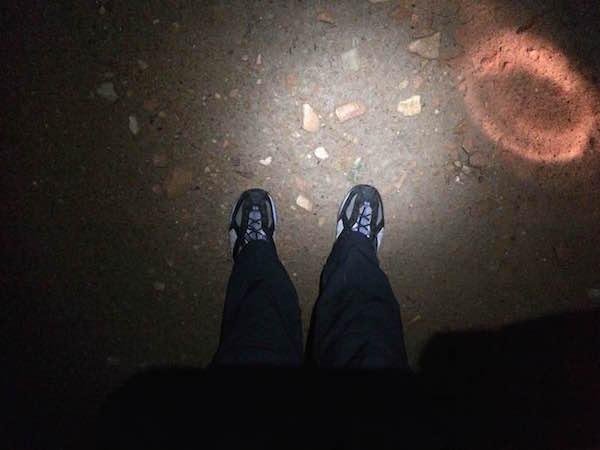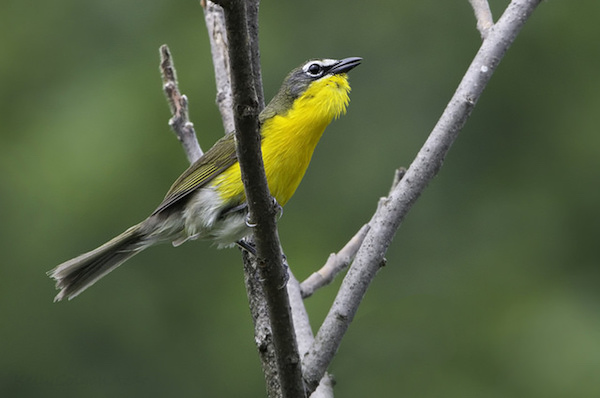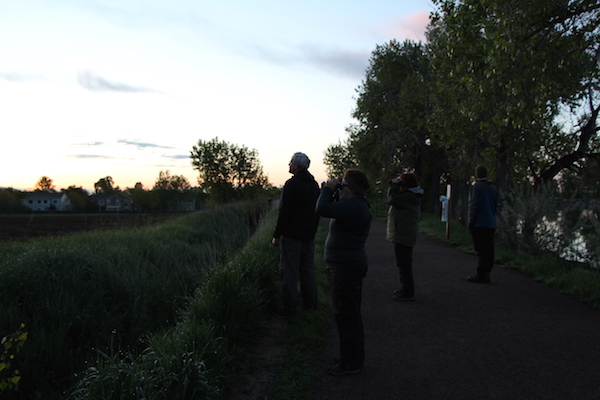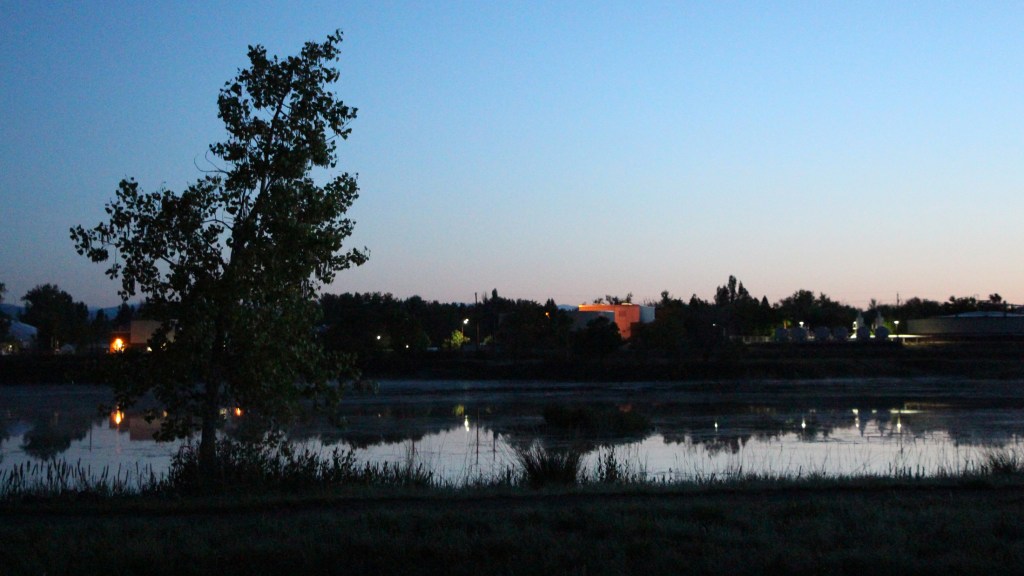“Mild insanity a prerequisite for participation.”
That’s not the typical advertisement for a birding walk. Most birding trips I’ve attended in Colorado have advised us to bring sturdy walking shoes and mosquito repellant.
None have ever recommended that anyone foolhardy enough to RSVP should receive a psychological evaluation before participating.
Some birders participate in Big Days, where they try to see as many bird species as possible in a 24-hour period. Some go all in, binoculars in hand at 12:01 a.m. Others take a more relaxed approach.
And some idiots, myself included, decide to cut out that day-birding nonsense and condense the most arduous and challenging hours of a Big Day into one epic, 10-hour long night-birding marathon.
Welcome to the Big Night.
18:30 – Rendezvous and Regret
Species Seen
: 0
It’s actually happening.
I spent most of the 45-minute drive from Denver hoping I get a flat tire. The past week had been a rollercoaster of regret — I’d like to have done a Big Night. But actually birding for nine hours straight in the darkness with no sleep? Yikes.
We’re meeting at Ted Floyd’s house before carpooling into the mountains. Floyd, an editor at the American Birding Association and local birding guru, will be our trip leader for the evening. Later, he gives himself the more apt description of “enabler.”
Floyd informs us that we’ll be driving a west-to-east route — down the mountains, through the foothills, and into the plains — to shorten our nighttime hours by a full minute. I can’t decide if I want to laugh or cry.
If there’s one thing you should know about me, it’s that I do not stay up late. Ever. Like most birders I’m a morning person — awake and chipper by 5:30 a.m. and bone-tired by 8:00 p.m. My circadian rhythm and geriatric bedtime are non-negotiable, and I don’t handle sleep deprivation well.
Coffee in hand, I climb into the car with Floyd and fellow birder John Breitsch. We’re off.
19:34 – Meyers Homestead Trail
Species Seen
: 0
Coffee Consumed
: 1
It starts hailing two minutes after we pull into the dirt parking lot at our first stop. Pea-sized ice bombs are crashing in from the low clouds, as thunder rolls and lightning strikes uncomfortably close by.
“We haven’t even started and we’re already miserable!” says Floyd jokingly. He, Breitsch and I huddle beneath the open trunk of the Subaru and wait for the rest of our party to struggle into their raingear.
As the hail turns to freezing rain, the final group of eight birders exchange quick introductions as Floyd goes over the rules: We can start counting at 8:16 p.m., and we’ll bird straight through until sunrise at 5:39 a.m.
We trundle down the wide dirt trail, alternately crunching over hail and squelching through mud. After a freakish week of near-constant rain on the Front Range, everything is utterly sodden.
Including my shoes.

20:16 – Ready, Set, Bird
Species Seen
: 0
Types of Precipitation
: 3
Something’s missing. Realizing I don’t have my binoculars, I begin to panic. Then I remember that it’s dark out and I’m not actually looking for birds. I’m listening. This is weird.
“Okay, we’re official,” says Floyd as his iPhone hits 20:16. Seconds later, someone spots an American robin landing on a nearby pine. It’s our first bird of the night, and one of the last ones that we will actually see.
Four minutes later the distinctive, insect-like buzz of a broad-tailed hummingbird is heard off to the right. “That’s a choice bird for a big night,” says Floyd.
We continue up the path, stopping every one or two minutes to listen. It’s cold, quiet, and not very birdy. We’re looking for owls and common poorwills, but the only thing we’ve heard so far is a distinctly non-avian critter — a barking dog.
We turn around, and by the time we make it back to the parking lot at 9:20 it’s officially dark out. I’m really excited about the warm car and my roast-beef-and-swiss sandwich, which I’ve been thinking about for the past half hour.
Just as we’re about to give up on the poorwills we hear a distant, tremulous poorwill, poorwill, poorwill. Bird number four, check.
“Who wants to guess what time we’ll hit double digits?” asks Breitsch. Floyd guesses by midnight, others sooner.
We were all wrong.
22:10 – Realization Point
Species Seen
: 4
Wet Feet
: 1.5
I’m only partially thawed out and halfway through my sandwich when we pull up to Realization Point. The place is aptly named — two hours into the Big Night and I’ve had the not-so-sudden realization that I am an idiot.
We pull of onto the side of the road, and Floyd tries to call in flammulated and northern saw-whet owls.
Silence.
“Well, its one of two things,” he says. “Either the birds aren’t back yet, or it’s too cold.”
I think there’s a third option: the owls are smarter than we are.
As we listen for any distant, whistled toots, headlights flare and another car pulls into the parking lot. An indeterminate number of loud, scruffy college students tumble out and proceed to light up pipes.
The hazards of birding in Colorado — having your owling disturbed by other recreational activities.
23:07 – Fowler Trail
Species Seen
: 4
Coffee Consumed
: 2
We’re less than a mile up the trail… and part of our group is lost. A few people hung back to listen to a night-singing yellow-breasted chat — whose deafening calls have followed us up the trail — and hooked a left onto another trail.
I can’t blame them. Walking in the pitch darkness, it took us several minutes to realize they weren’t there. Breitsch goes to find them, flashlight in hand.
The chats keep calling, so exuberantly and so close that I’m convinced I’m about to step on them. I’m a big fan of chats — they’re pudgy, taxonomically confusing little birds with a bizarre array of calls, ranging from boisterous to endearingly sad.
My excitement over the chats is tempered somewhat by the realization that it’s not even midnight. Really? At least I have another sandwich waiting for me in the car.

1:22 – Sombrero Marsh
Species Seen
: 5
Sandwiches Eaten
: 2
“Let’s go see some ducks!” Floyd says as he hops out of the car. We haven’t ticked in a new bird in some time, despite making several stops to listen for marshy species like Wilson’s snipe. Any bird noise was drowned out by the enthusiastic tunes of western chorus frogs.
My car door isn’t even closed before I hear someone yell “Gadwall!” Looking out over the marsh, I hear the nasal quacks of a female gadwall. Bird number six. Within minutes we’ve charged into double digits, picking up a mallard, American coot, Virginia rail, and a killdeer — only two of which I can identify by ear.
“We’re just raking in the birds now!” says Breitsch. Indeed.
2:48 – South Teller Farms
Species Seen
: 10
Coffee Consumed
: Not enough
I’m on autopilot. Shuffling along, my only goal in life is to stay upright and scan the ground in front of me for puddles. I’ve given up on navigating by moonlight and switched on my red-light headlamp. I tell myself: You’re not cold. It’s not 38 degrees out. Just follow the little red ball of light.
We’re somewhere on the Teller Farm trails… but I have no idea where. The wide trail skirts the edges of farm fields filled with singing western meadowlarks. I’m convinced we’ve been walking for miles, but given that I can barely focus my eyes I’m not confident in my estimate.
My bleary-eyed hallucinations are interrupted by a great horned owl, silhouetted against the blue, star-strewn sky. In the wee hours of the morning, the birds watch the birders.
4:00 – Walden Ponds
Species Seen
: 15-ish.
Minutes Until Dawn
: 99
Things are starting to get interesting. Shuffling across the ice-covered boardwalk — yes, it’s that cold — we hear coyotes yipping across the lake. Was that a screech owl? Maybe. A horse whinnies in the distance, and interspersed amidst the pre-dawn trills of red-winged blackbirds we hear the distant, maniacal cackling of a raccoon.
At 4:42 we hear an American robin singing. At 4:44 the woods explode with birdsong.
American robins, mourning doves, yellow warblers, Bullock’s orioles, and a cheeky grey catbird start singing simultaneously, as if they’re coordinating telepathically around some pre-determined cue. After a night spent straining to hear birds, the sound is deafening.
Our birding party is down to five — two smart individuals ducked out sometime between 2:00 and 3:00 a.m., and another is passed out in the car.

5:18 – Greenlee Preserve
Species Seen
: 24. I think.
Weaving around hopping bunnies and a slinking fox, we pull into the neighborhood adjacent to Greenlee Preserve. Instincts from my days as an elite athlete are kicking in — I can see the finish line, we have 21 minutes left, and we need to get moving.
The birds are coming fast and furious: Western wood pewee, song sparrow, downy woodpecker, tree, barn and violet-green swallows. Someone jokes, accurately, that we’ve improved our rate from one bird-per-hour to one bird-per-minute.
“Eight minutes!” yells Floyd.
We jog along the path to the lake shore. American goldfinch, osprey, barn swallow, dusky flycatcher, black-crowned night heron, lazuli bunting.
With three minutes to go, a bald eagle flies across the lake. Brown-headed cowbird, chipping sparrow, clay-colored sparrow.
My phone’s alarm starts vibrating — its 5:39 a.m. We’re done. And unless I fall asleep at the wheel on the way home, I’ve survived my first Big Night.
Suddenly I realize that birding for 9 hours and 23 minutes straight would be an accomplishment even during the daylight hours.
Was it fun? Absolutely. Was it exhausting? Incredibly. Would I do it again? Maybe. I guess I do need that psych evaluation after all.




What a GREAT article.